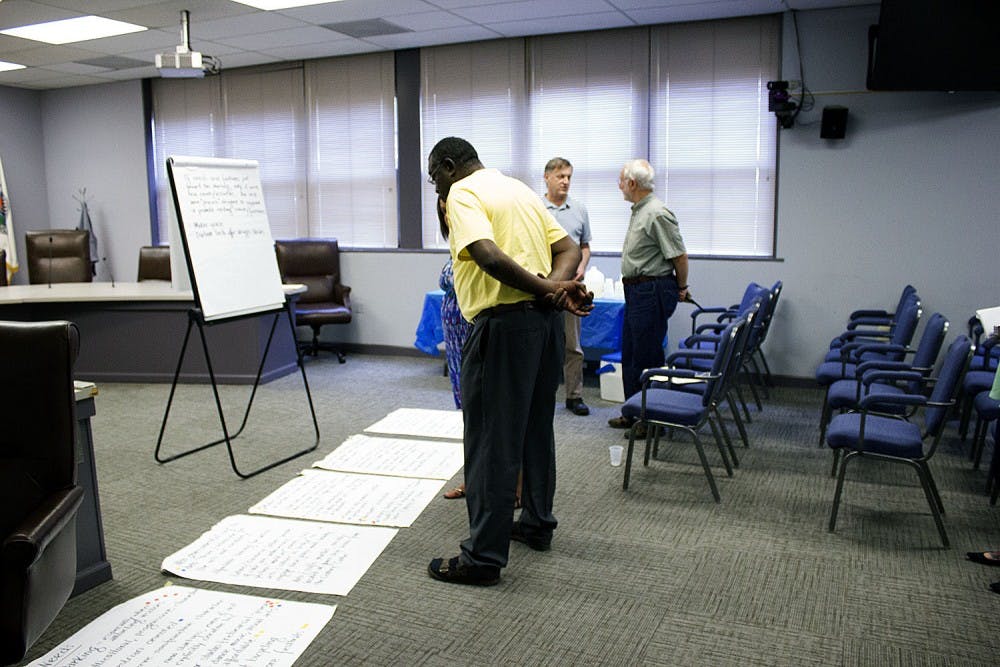Rhode is also part of the Triangle Weavers Guild and said she has seen the guild thrive in recent years with now a total of 85 members. She said, now more than ever, they need a bigger, permanent space to practice their art.
She said she sees other surrounding towns like Durham and Raleigh that have dedicated lower-cost art spaces and does not see why Carrboro does not do the same.
One of the most voted-on needs for the proposed district was the need for more studio space, in particular ones that would offer artists free parking space.
Using underutilized space
The discussion led into using underutilized buildings to develop more artist spaces and creating subsidized spaces within these unused buildings.
Carrboro Community and Economic Development Director and member of the steering committee Annette Stone said the town needs to strengthen what is already there and make sure that it serves the people that make the arts and creative district what it is, as well as giving residents and tourists a full experience of it.
Stuart Rosenfeld, principal and founder of Regional Technology Strategies, Inc. and member of the steering committee, said at this stage it is still very much about the process and how they can promote what they’re doing instead of what will actually be done.
“I think the challenge is to figure out what distinguishes Carrboro and what sets it apart,” Rosenfeld said. “Carrboro has a lot of depth and creativity already. But it’s a question of how it can distinguish and brand itself.”
Where to draw the line
Stone said the biggest takeaway from the meetings was how to redefine the proposed boundaries in order to be more inclusive of all members of the town.
In particular, underserved members, such as the Latino and Burmese community, were discussed.
“Downtown has a little distinct character itself, but there is desire to bring folks from the periphery,” Stone said. “We need to open up communication to do that.”
To get the day's news and headlines in your inbox each morning, sign up for our email newsletters.
Rosenfeld said it is important to open up communication to residents because the value of the proposed project is ultimately the experience of the customers.
“I think any kind of strong economy is based on strong social connections,” Rosenfeld said. “You want to make sure you have something that is inclusive, that you include everybody in and that you make them feel like they are part of it.”
The next step
The three two-hour meetings are part of phase one in the proposed project, where the focus is to get feedback from members of the community and collect data.
Trish McGuire, Carrboro planning director and member of the steering committee, said the point that the project is in right now is to explore whether the community feels the need to establish an arts district.
“Our next step is to really map out the assets we have, that we characterize them, trying to get a full picture of what the artistic creative economy is in Carrboro,” she said.
Stone said they are still waiting to see whether the $50,000 National Endowment for the Arts grant they applied for will be given to them to establish the district.
“If funded then we’ll move on to phase two where we’ll take the data collected and try to develop a fully fleshed out plan that the (Carrboro) Board of Aldermen can consider for adoption,” she said
Contact the desk editor at arts@dailytarheel.com.




